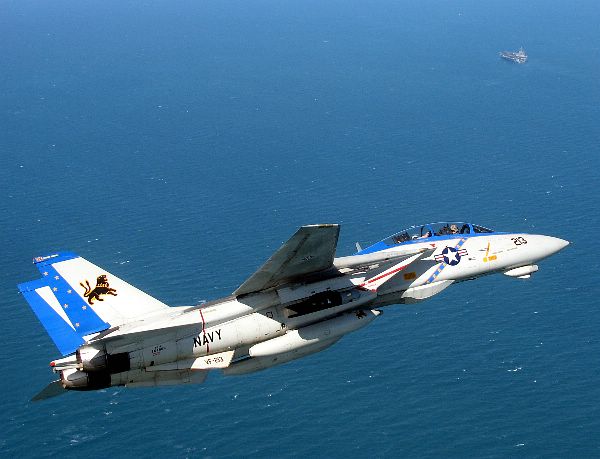Few days ago, Dario Leone, a long time reader and a huge F-14 Tomcat fan, sent me an email to point out what he had noticed about the date Tony Scott, the famous director of “Top Gun”, chose to commit suicide.
He had observed that Aug. 19 was the 31th anniversary of the day when two F-14s downed two Libyan fighters in 1981 (something that Scott, most probably, didn’t even know) and provided some interesting news about the fate of the two Tomcats involved in the dogfight and their crew members.
“Top Gun is the film that made the F-14 famous all around the world. Downings and crashes aside, aircraft depicted in the movie were true and they were driven by real pilots of the U.S. Navy belonging to VF-51 Screaming Eagles […] In a certain way, Tony Scott brought on the big screens what had happened on Aug. 19, 1981,” Leone wrote to me.
On that day, two F-14A Tomcats belonging to the VF-41 Black Aces and launched from the aircraft carrier USS Nimitz (CVN-68 ) were attacked on the Gulf of Sidra by two Libyan Sukhoi Su-22 and shot them down with two AIM-9L air-to-air missiles just 45 seconds after the first Libyan fighter opened fire (Rules Of Engagement were the same as in the film, namely: “do not fire until fired upon”).
One of the two aircraft was the BuNo 160403, callsign “Fast Eagle 102”, with Cdr. Hank Kleeman and RIO (Radar Intercept Officer) Lt. Dave Venlet on board.
“Kleeman is famous in the Tomcat community not only for being the first pilot to score a kill with the F-14 but also for getting the Secretary of the Navy’ s approval for the F-14D four years later. Unfortunately he died in a landing accident (plane hydroplaned off the side of the wet runway, then flipped over) at NAS Miramar on an F/A-18A Hornet (BuNo 162435).”
The other Tomcat involved in the Aug. 19, 1981 dogfight was BuNo 160390, callsign “Fast Eagle 107”, piloted by Lt. Larry “Music” Muczynski and Lt. Dave Anderson as RIO.
“That plane earned the headlines again on Oct. 25, 1994, when, piloted by Lt. Kara “Revlon” Hultgreen, U.S. Navy’s first female F-14 pilot, crashed into the sea while landing aboard USS Abraham Lincoln, off San Diego. While her RIO, Lt. Matthew P. Klemish, ejected safely she didn’t survive the ejection.”
As a consequence of the incident, two separate investigations were conducted.
“The Judge Advocate General (JAG) cited a technical malfunction as the root cause of the crash whereas the Navy Mishap Investigation Report (MIR) came to the conclusion that it was a pilot error to induce the fatal left engine stall.”
Until the latter was leaked, the JAG version was Navy’s official position on the mishap.
“There are dates that seem to mark the path of the life of people and their destiny. In this case, August 19th has not only marked in a way or another one the fate of some people, but also the history of a legendary plane, the Grumman F-14 Tomcat.”








